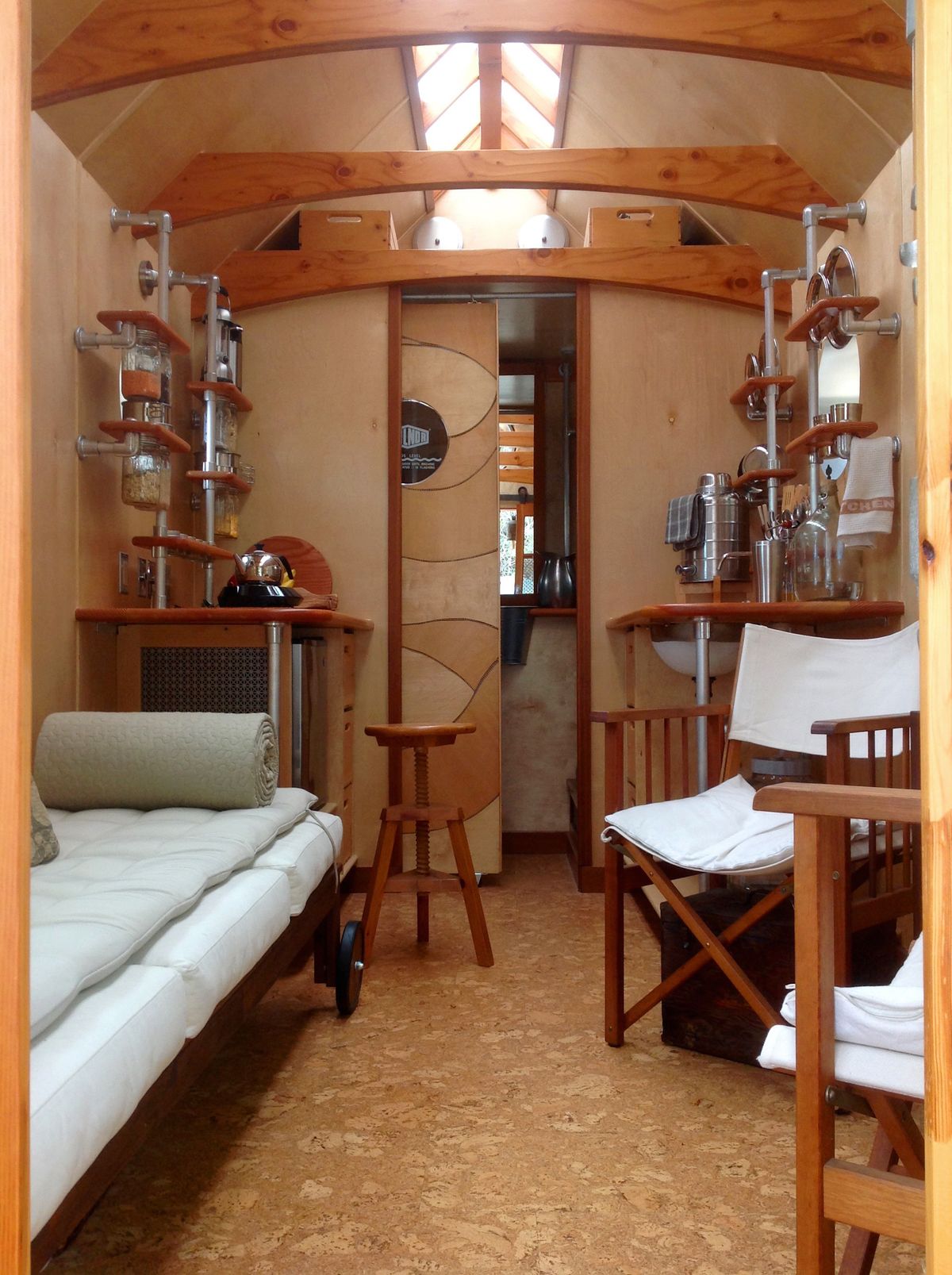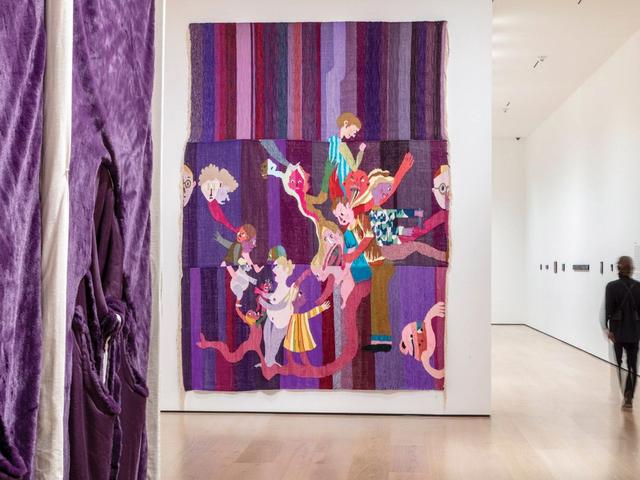Behind the Hammer Museum in Los Angeles, parked on a side street, is a custom-built little house that is part of the latest edition of the museum’s biennial, Made in LA 2023: Acts of Living (until 31 December). N.O.M.A.D. (2015-23) sits on wheels and features a welcoming porch and round windows that are repurposed washing machine doors, a striking contrast of gleaming stainless steel set into a cladding of corrugated metal. Artist Dominique Moody welcomes visitors, two at a time, and patiently explains the features of the 150 sq. ft dwelling with a single bed in one corner and a kitchenette in the other, and lots of memories in between.
On a long wall hangs a collage of bird silhouettes and set into one is an old photograph of her family—parents plus seven children who grew up partly in Germany in the years after the Second World War. They eventually settled in Philadelphia and made their homes more gemütlich by salvaging what they could reuse. Now this activity is part and parcel of Moody’s art practice. “I’m hoping that I have a story to tell that’s embedded in the artwork,” she says, alluding to stories such as how difficult it was to find housing for Black Americans like her family. She spent over three years crafting the house and has driven it as far as New Orleans and back. “It also functions as my home,” she adds, although she’s not living in it during Made in LA.
Like many works in this edition of the city’s most closely watched biennial, N.O.M.A.D. references the everyday, as well as the politics of survival. And like so many featured works, it is not the sort of piece that would fit neatly into a commercial gallery setting.
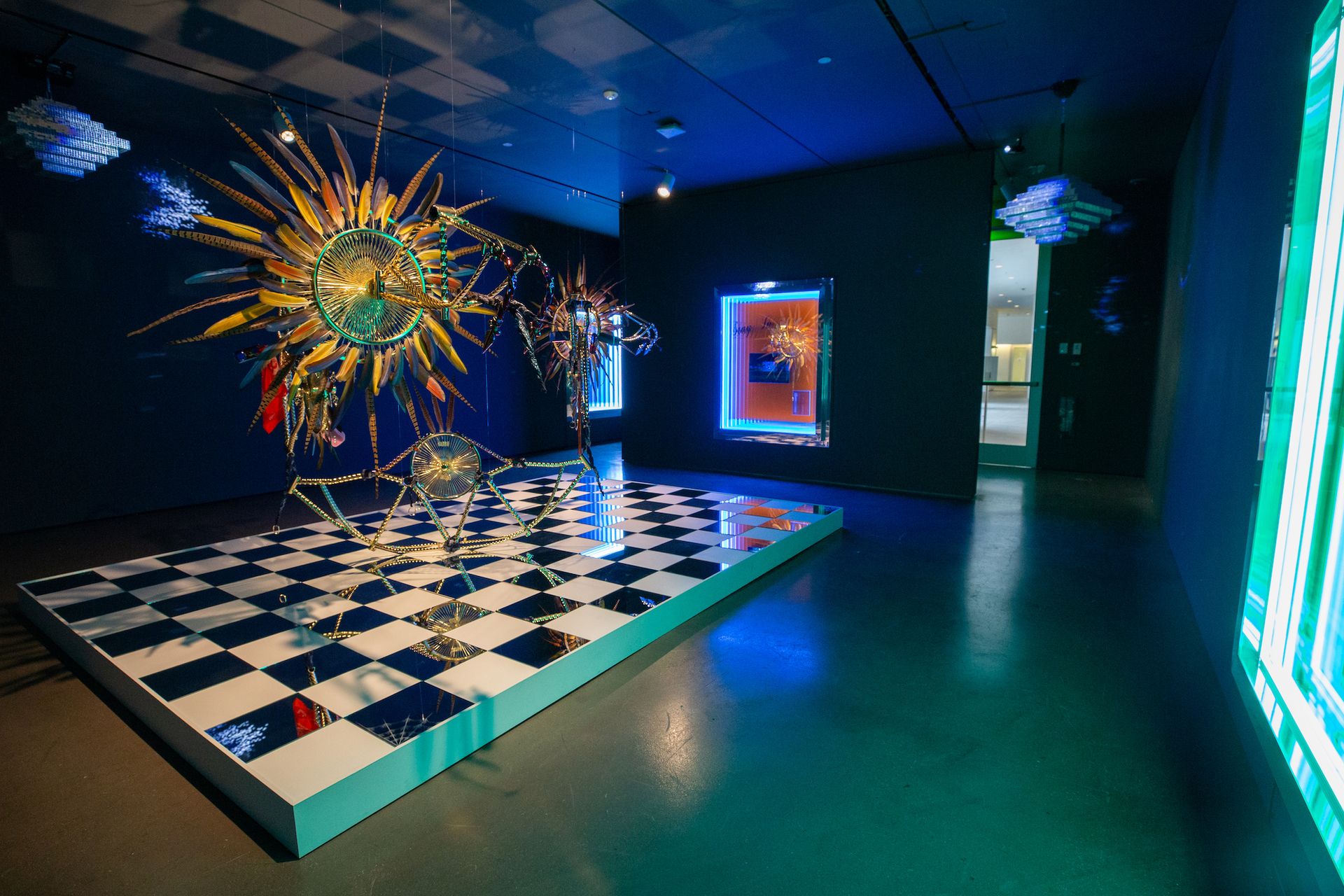
Installation view of Made in LA 2023: Acts of Living at the Hammer Museum featuring sculptures by Guadalupe Rosales Photo by Ashley Kruythoff
Curated by Diana Nawi and Pablo José Ramírez, Acts of Living takes its title from a comment by the assemblage artist Noah Purifoy, who also mined his materials from the discarded and the repurposed. “One does not have to be a visual artist to utilise creative potential,” he said. “Creativity can be an act of living, a way of life and a formula for doing the right thing.”
After some 200 studio visits, the curators chose 39 artists, including two collectives and an organisation. They range from budding young artists recently out of art school to those who have had decades-long careers, such as Luis Bermudez, Pippa Garner and Teresa Tolliver. Nawi says many of the recommendations she and Ramírez received came from other artists.
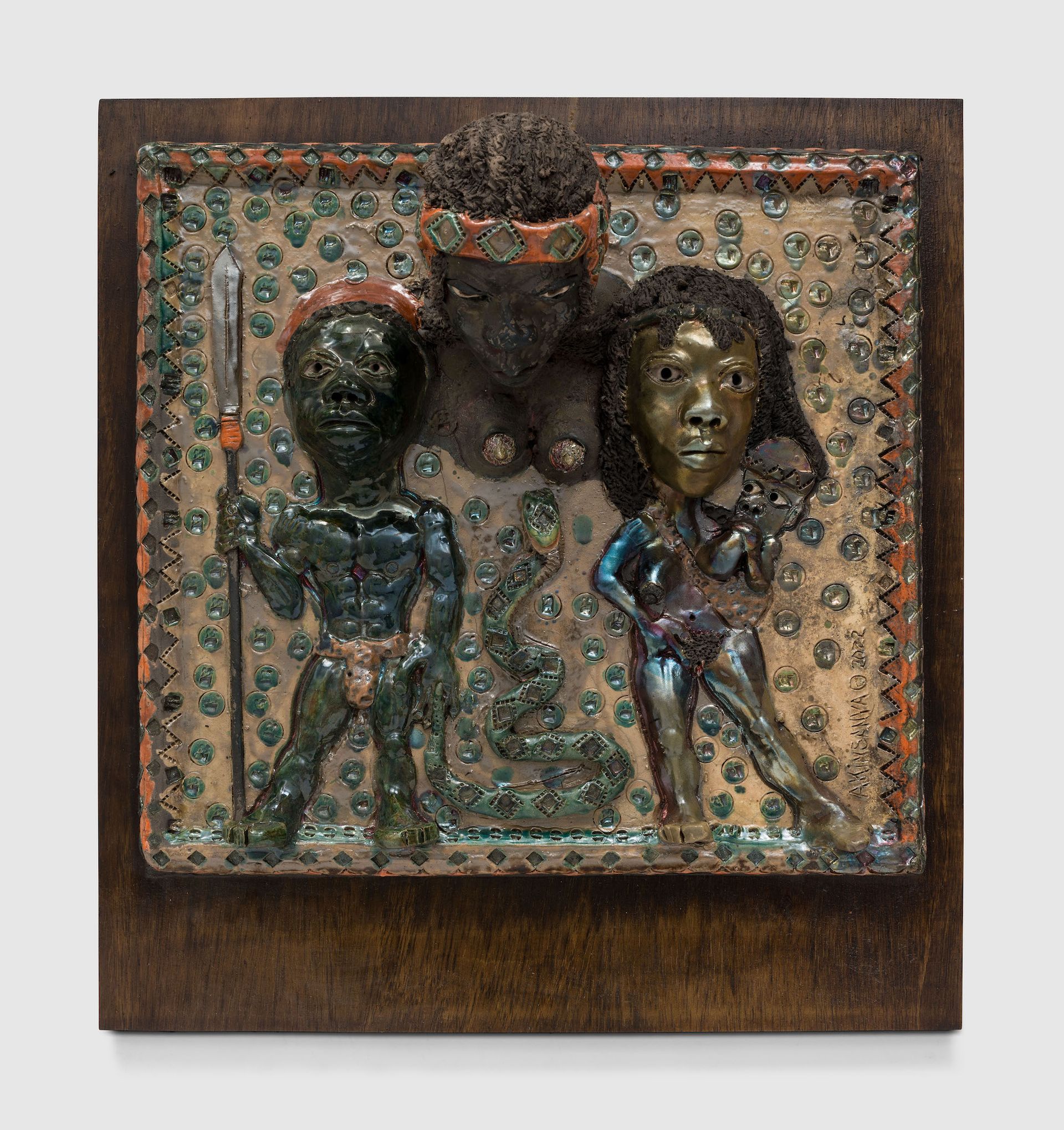
Akinsanya Kambon, Woman as God - The Creator of Life, 2022. Courtesy Pan African Art Museum.
One longtime artist the curators included, Akinsanya Kambon, had not heard of Made in LA before, although at the opening reception he seemed pleased to be alongside his wall plaques and sculpture made of moulded clay. His works are dramatic narratives incorporating West African and Black American stories, featuring scenes of brutal colonial and racial oppression and the gentle bonds of family and community. Kambon has shared in that history, having been a member of the Black Panther Party in Sacramento after returning from service in the Vietnam War. “If we don’t talk about it, we’ll never heal,” he says in a video made for the exhibition.
The exhibition boasts a diversity of media and genres, from paintings on canvas and drawings on paper, to quite a lot of sculpture and assemblage. There is even a tour of the San Fernando Valley being offered by Vincent Enrique Hernandez in his old Volvo sedan. Visitors fill out an entry form to win one of the five-hour adventures, given out once a week. The exhibition also boasts a remarkable diversity in the artists’ backgrounds with respect to race, culture, age and gender.
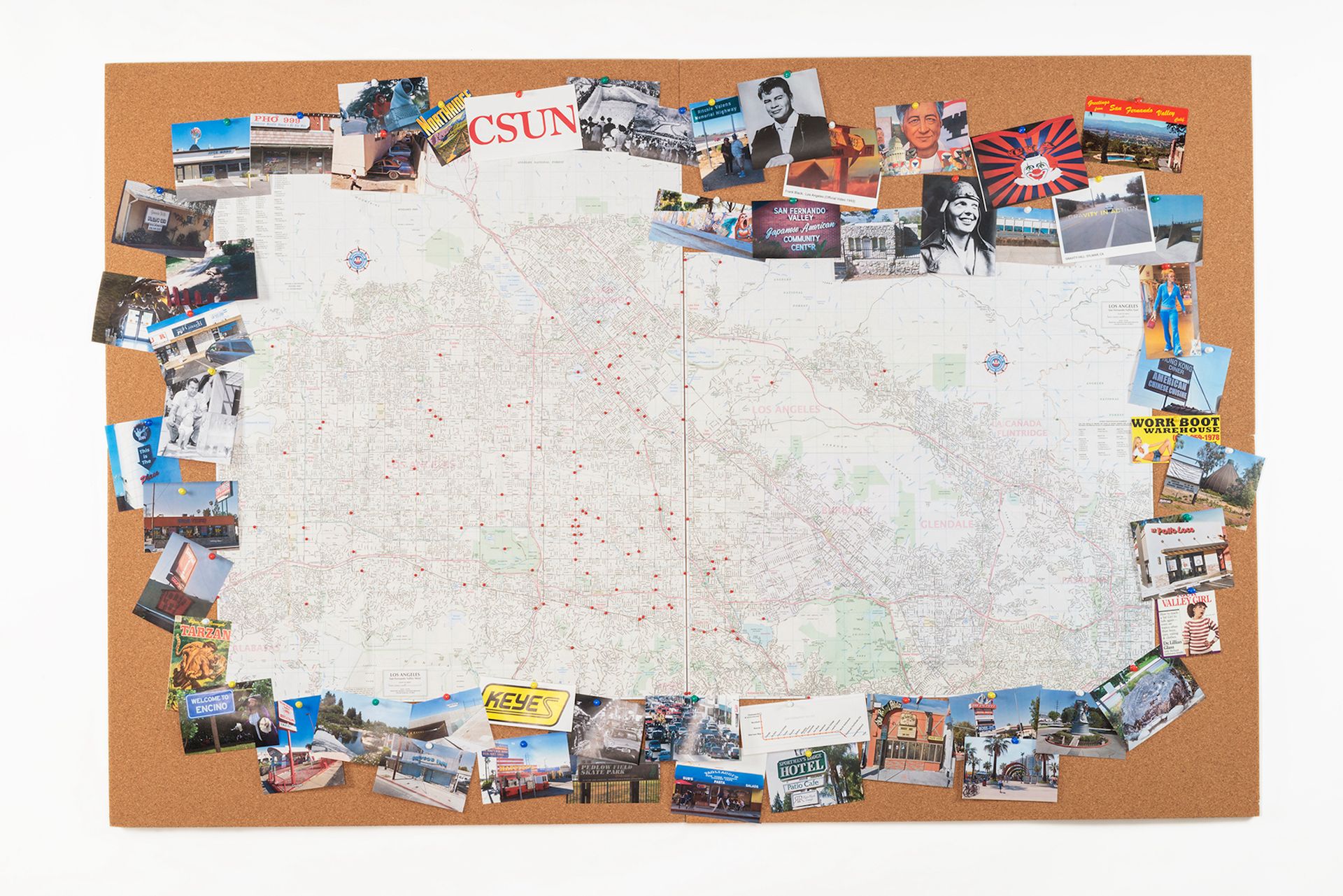
Vincent Enrique Hernandez, Valley Research Map, 2019-ongoing Courtesy of the artist
“It’s very much a kind of lens back onto what’s happening in the city,” Nawi says. “We were always thinking about the exhibition itself and how to create dialogue, rather than a series of solo presentations.”
The biennial has long provided a significant boost for featured artists. There are some whose work was rediscovered, such as the late Luchita Hurtado—her first museum survey opened at the Los Angeles County Museum of Art two years after a selection of her paintings was included in Made in LA in 2018. There are also younger artists who have gained wider recognition. Kelly Akashi, whose bronze, rope and cast-rubber works were featured in 2016, has recently had shows at François Ghebaly in Los Angeles and Tanya Bonakdar Gallery in New York. A major survey of her work recently opened at the Museum of Contemporary Art San Diego in La Jolla (until 18 February 2024).
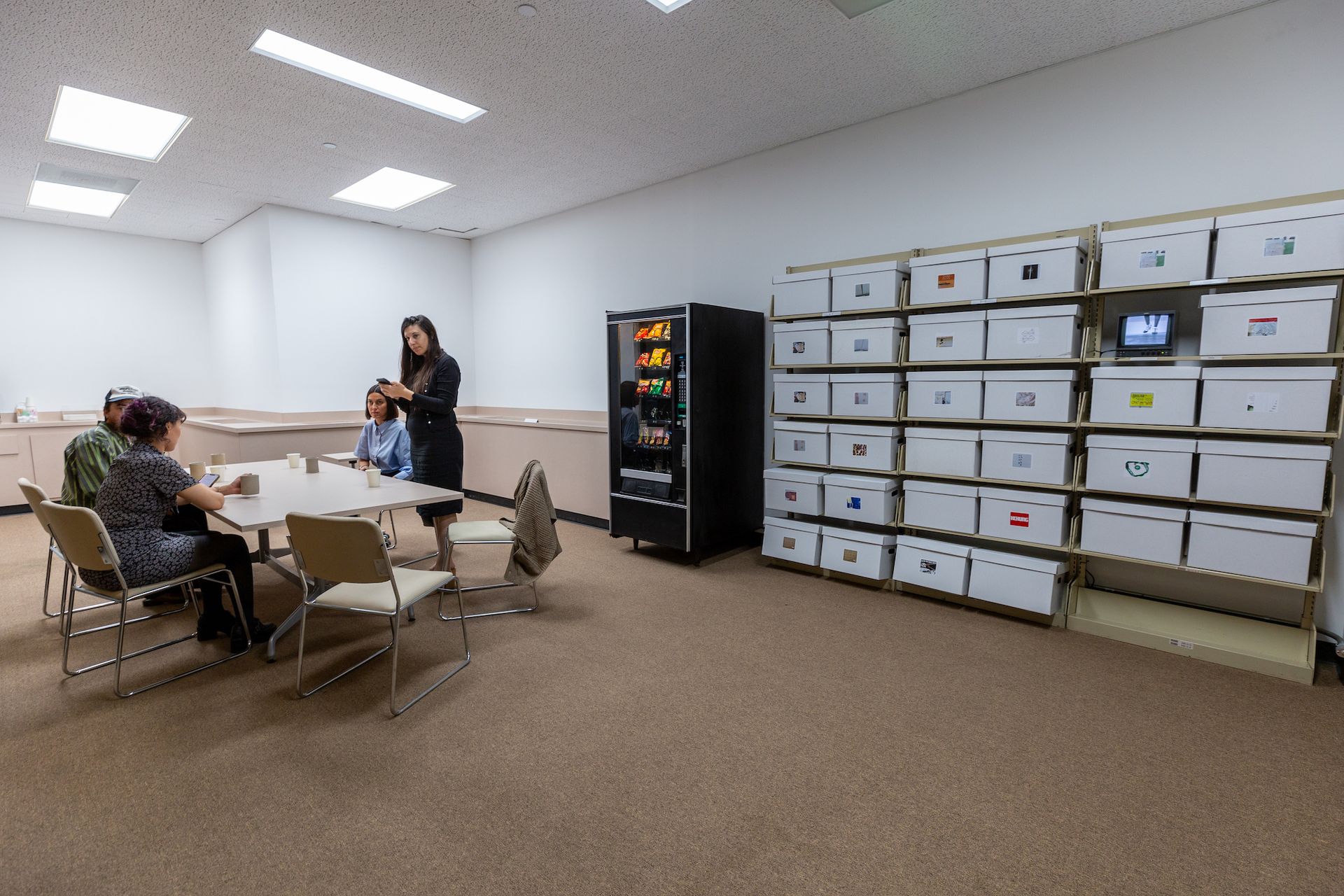
Installation view of Made in LA 2023: Acts of Living at the Hammer Museum Photo by Ashley Kruythoff
For gallerists with a stake in the Los Angeles scene, the biennial is a must-see. Jeffrey Deitch attended the opening reception, slowly looking at each group of work. “This exhibition reflects Los Angeles right now,” he says. “This is the new multicultural city. It’s way beyond the post-studio art—it’s very real, it’s connected with peoples’ lives.” A little later, after seeing Kambon’s work, he suggested they set up a studio visit.
For many artists in the exhibition, art is both a profession and an integral part of their lives—a calling. Moody actually lives in her art. “It is both art and my home,” she says. “In today’s world, where the issue of housing is so challenged, there needs to be more ideas, a more creative vision for what home means. I like having N.O.M.A.D. in public spaces so those conversations can be had.”

Ishi Glinsky, Inertia—Warn the Animals (2023) in Made in LA 2023: Acts of Living at the Hammer Museum Courtesy of the artist and Chris Sharp Gallery, Los Angeles. Photo by Ashley Kruythoff
- Made in LA 2023: Acts of Living, until 31 December, Hammer Museum, Los Angeles


